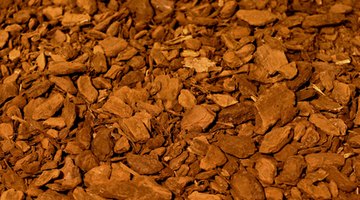What Are the Dangers of Cedar Wood Shavings?
Homeowners can use red cedar chips and wood shavings to solve a variety of problems around the home and garden. Hang cedar chips in bags or scatter them in closets to repel insects, and use them as mulch around the bases of trees and shrubs. Cedar wood shavings are also a common, inexpensive pet bedding.

However, the aromatic oils that give cedar wood its insect-repellent properties and pleasant smell can be dangerous to animals and some humans. For most people, cedar shavings are not dangerous, but it may be necessary to use them with caution, especially around small animals and people with existing allergies or sensitivities.
Cedar Asthma
Plicatic acid is an irritating substance found in cedar wood and shavings. People who are exposed to this substance for long periods may suffer from a condition called “cedar asthma,” which closely resembles an allergic reaction. Unfortunately, according to Davidson College, 50% of sufferers who are no longer exposed to cedar continue to show symptoms. This problem occurs primarily in forestry and sawmill workers, but sensitive people and those who already have respiratory problems may wish to limit their exposure to cedar shavings and mulch.
Contact Dermatitis
Some people may suffer from skin problems caused by contact with cedar oil. Clothes stored in contact with cedar shavings may cause skin irritation and itching. According to the British Journal of Dermatology, thymoquinone, a strong skin irritant found in red cedar, is also a potent allergen. Irritation is most common in workers who have regular exposure to cedar oil, but it may occur in others. People who are prone to skin irritation, eczema and other dermatological conditions may wish to avoid cedar shavings or use them sparingly. Enclosing the cedar shavings in a cloth or other permeable bag may allow you to use them as insect repellents without the danger of contact dermatitis.
Animal Toxicity
Stores commonly sell cedar wood shavings as pet bedding for small mammals, birds and reptiles. However, animals confined near or on these shavings may suffer from toxic reactions to aromatic oils. Scientists have linked cedar shavings with irritation of the skin and respiratory tract, as well as abnormal liver function. Very young, very old and hairless animals are at higher risk for cedar-related problems. Dog bed manufacturers frequently use cedar shavings in their products, and some homeowners use shavings as litter in birdhouses. These animals may not suffer from the same ill effects, however, as they are not confined to the area around the cedar.
References
- Perdue University: Juniperus virginiana L.
- Melissa Kaplan's Herp Care Collection: Use of Cedar as a Substrate for Reptiles and Other Pets
- “Fisher's Contact Dermatitis;” Robert L. Rietschel, Joseph F. Fowler, Alexander A. Fisher; 2008
Writer Bio
G.D. Palmer is a freelance writer and illustrator living in Milwaukee, Wis. She has been producing print and Web content for various organizations since 1998 and has been freelancing full-time since 2007. Palmer holds a Bachelor of Arts degree in writing and studio art from Beloit College in Beloit, Wis.
Photo Credits
- écorces 6 image by Nathalie P from Fotolia.com
- écorces 6 image by Nathalie P from Fotolia.com
More Articles



